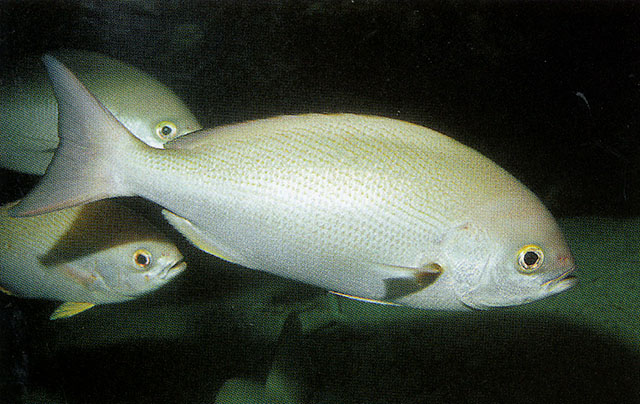| Lutjanidae (Snappers), subfamily: Lutjaninae |
| 80 cm TL (male/unsexed) |
|
reef-associated; marine; depth range 15 - 100 m |
| Indo-West Pacific: Persian Gulf to the Gulf of Papua (Papua New Guinea), north to Taiwan. |
|
Dorsal spines (total): 11-11; Dorsal soft rays (total): 13-15; Anal spines: 3-3; Anal soft rays: 8-10. Description: Dorsal profile of head high. Interorbital space strongly convex. Eye relatively large with an adipose lid. Preorbital bone narrow, less than eye diameter. Snout relatively short and pointed. Pectoral fins long, reaching level of anus. Predorsal scales on top of head beginning above middle of eye. Scale rows above and below lateral line rising obliquely toward dorsal profile. Adults greenish-grey to reddish with yellowish fins (Ref. 48635). Body depth 2.3-2.8 in SL (Ref. 90102). |
| Adults inhabit reefs and rocky bottoms (Ref. 30573). They are found in schools over shallow depths of a few meters in open ocean reefs. In most areas they are found in deep waters and are usually trawled to 100 m depth (Ref. 48635). They feed on benthic and planktonic invertebrates (Ref. 30573), and possibly small fishes. Marketed fresh or dried-salted. |
|
Least Concern (LC); Date assessed: 28 June 2018 Ref. (130435)
|
| harmless |
|
Source and more info: www.fishbase.org. For personal, classroom, and other internal use only. Not for publication.

